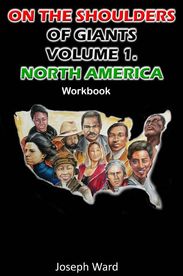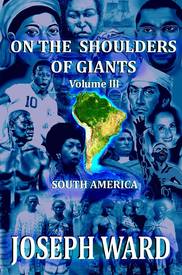|
Miltona Mirkin Cade was born March 25th, 1939 in New York City where she was raised by her mother in a single parent home. She was a student of the Harlem Renaissance and was encouraged by her mother to become a writer. She excelled in school, with the support of her mother she graduated high school six months ahead of her class. Bambara graduated from Queens College in 1959 with a Bachelor’s Degree in Theater Arts and English. That same year she published her first short story in Vendome Magazine titled “Sweet Town.” During the 1960’s Bambara lived in Milan, Italy for a year before returning to New York and becoming a social worker. She also became an occupational therapist, director of programs in her neighborhood, directed a theater program, gained her Master’s degree in modern American fiction at New York City College, and published her short stories in Redbook Magazine. Bambara taught at City College from 1965 to 1969 when she became an Associate Professor of English at Rutgers University. She would find her grand-mother’s sketchbook which was inscribed with the name “Bambara,” she eventually changed her name legally to Toni Cade Bambara in 1970. Later that year she published her first book The Black Woman: An Anthology, which profiled black women and their issues with racism in America. In 1971 she published her second book Tales and Stories for Black Folks. In 1972 she published her collection of short stories titled Gorilla, My Love. Bambara studied women’s organizations in Cuba and Vietnam from for two years. She was interested in how these movements were effective and how she could use the information for her people. Atlanta, Georgia became the home of Bambara and her daughter in 1974 as she began teaching at Spelman College. While at Spellman she created the Pamoja Writer’s Collective, an organization she used to help foster the next generation of black writers. Bambara published her second short story book, The Sea Birds Are Still Alive in 1977; in 1980 she published her award winning book The Salt Eaters. In 1981 Bambara was awarded the National Endowment for the Arts Literature Grant because of her excellent publications. She would write and narrate the script for the documentary The Bombing of Usage Avenue in 1986, later that year she would win the Best Documentary Award from the Pennsylvania Association of Broadcasters. She also won the Documentary Award from the National Black Programming Consortium in 1986. Bambara moved to Philadelphia with her daughter in 1987, published two Novels and wrote nine screenplays. She was diagnosed with colon cancer in 1993 and eventually succumbed to the cancer in 1995. Bambara used her voice to shed light on the plight and injustices black people were facing in America. She displayed the African-American with dignity, intelligence, honor and creativity. She also believed in empowering the next generation, often using her platforms to cultivate and promote the talents of up and coming writers. She understood that it was her duty to become an example of excellence for her people. Mrs. Toni Cade Bambara, we stand on your shoulders. J.A. Ward References:
http://archive.csustan.edu/english/reuben/pal/chap10/bambara.html http://www.fembio.org/english/biography.php/woman/biography/toni-cade-bambara/
1 Comment
Doug Williams was born on August 9, 1955 to parents Robert and Laura Williams in Zachary, Louisiana. Williams the sixth of eight children, they grew up in poor conditions in the integrated south. Around the age of seven Williams began playing football, baseball and basketball, but football became his ticket to fame. In 1973 as a senior at Caneyville High School Williams had an impressive season as the quarterback for his high school team. He passed for 1,180 yards and twenty-two touchdowns which were outstanding statics for a high school quarterback. Despite his excellence he was greatly overlooked when it came to the college recruiting process, he was only recruited by Southern University and Grambling state University; two schools located in Louisiana. Grambling State was coached by the legendary Eddie Robinson at the time; Coach Robinson impressed Doug Williams so much that he chose to attend Grambling State and his life changed for the better. The fall of 1973 Doug Williams became a freshman at Grambling State and faced a challenge right away being asked to red-shirt (sit out) his first year. The beginning of his sophomore year, Williams was no longer a red-shirt player but he was not earning playing time either. He was listed third out of three quarterbacks on the teams depth chart, and once again he tried to quit the team. Williams was blessed with a lucky break, during the time of his attempt to quit the team the starting quarterback was injured and Williams went from number three to number two. Williams’ movement up the depth chart sparked a fire deep within him to give more effort. During practice Williams started to show his brilliance, he showed why Grambling State made a great choice in recruiting him. Williams worked his way into the starting lineup and never looked back. Over the next three years Williams would prove to be a great quarterback. He led Grambling to a Southwestern Athletic conference championship, won 35 of 40 games, named first-team All-American by the associated press, finished fourth in the Heisman Trophy race, compiled 8,411 passing yards with 93 touchdowns. He also graduated with a Bachelor of Science degree in health and physical education. In 1978 Williams attended the National Football League’s draft and was selected as the 17th overall player by the Tampa Bay Buccaneers. Williams started training camp late because of contractual issues, but despite his late arrival he was able to win the starting job as the quarterback. Through the first eight games he played of his rookie season he led his team to a 4-4 record, suffered a broken jaw and still was named to the NFL’s All-Rookie team. 1979 his second year, Williams led his team to a 10-6 record and a playoff appearance leading them to the conference championship game. In 1980 his team regressed with a 5-11 record but Williams produced his best statistical season, in 1981 he lead his team back to the playoffs but were defeated by the Dallas Cowboys. Late in 1982 Williams’ life took a turn for the worst, his initial playing contract was expired and he and the Buccaneers began negations, Williams was expecting a raise in pay because of his brilliant performances. During contract negotiations Williams’ wife began to experience severe headaches, she received a CAT scan and it was revealed that she had a brain tumor. His wife underwent surgery to remove the tumor but died in the hospital a week later. The death of his wife hurt Williams deeply, so much that he moved back to Zachary, Louisiana with his father. While living with his father he faced another challenge, his father’s health started failing him and both of his legs were amputated; also his contract negotiations with the Buccaneers failed and he had no job. After contract negotiations failed he was offered a contract by a startup football league the United States Football League. Williams signed the contract and began playing football again. Williams was the quarterback for the Oklahoma Outlaws and once again showed his brilliance, but looming in his future was more turmoil. The USFL was going bankrupt and eventually folded, Williams wanted desperately to rejoin the NFL and unsure about his future accepted a coaching job at Grambling State. Shortly after beginning as a coach Williams received a call from Coach Joe Gibbs, Head Coach of the Washington Redskins offering him a contract which he signed quickly. He began as a backup quarterback for the team, but received playing time throughout the season after the injury of the team’s starting quarterback. During the final game of the season Williams played exceptionally well and was named the starting quarterback for the playoffs. Williams played like a man possessed and led his team to two victories and a Super Bowl appearance against the Denver Broncos. Williams became the first black quarterback to start a Super Bowl, but this game he was overshadowed by the legendary John Elway who was considered the prototypical quarterback. Williams already faced adversity when he underwent a root canal for a tooth problem the night before the game. During the first quarter Williams twisted his knee and it seemed as if it was over for him. Williams returned to the game leading his team to a 42-10 rout of the Denver Broncos, and threw for 340 yards and four touchdowns setting Super Bowl records. He also set the record for the longest pass with an 80 yard touchdown pass. Williams threw for 228 yards in one quarter alone. Doug Williams became the first black quarterback to start and win the Super Bowl; he also became the first black quarterback to win Super Bowl MVP. During the offseason Williams and his fellow Grambling Alumni set up the Doug Williams foundation. The foundation was dedicated to keeping children in school and away from drugs. Also in the off-season, Williams signed a contract worth $3.3 million over three years and named the starting quarterback of the Redskins for the 1988 season. During the beginning of the season he suffered appendicitis and lost his starting job. During the 1989 season, he found out that he had a disc in his back was pressing against his sciatic nerve. He had surgery and lost the strength he initially had, later in the same year his father died from a bout with pneumonia. At the midpoint of the 1989 season Williams was benched and did not start for the rest of the 1989 season, and was later released by the team. In 1998 Williams became the Head Coach of Grambling State University replacing the legendary Eddie Robinson, the very man who taught him how to win. He went on to become a successful football coach and remains an inspiration to young black quarterbacks all over America. Doug Williams help pave the way for the black quarterbacks in the NFL today. Black quarterbacks were thought of as not smart enough to win the “big game”, but because of the dominance of Williams we now have two black quarterbacks to start, win, and dominate the Denver Broncos in the Super Bowl. Doug Williams, we stand on your shoulders. J.A. Ward. On August 29th, 1929 Otis F. Boykin was born in Dallas, Texas to working class parents. Boykin graduated from Booker T. Washington High School as Valedictorian. He then traveled to Nashville, Tennessee to attend Fisk University where he would graduate in 1941. After graduation he began working with the Majestic Radio and TV Corporation in Chicago, Illinois, testing automatic aircraft controls. Boykin would eventually leave Majestic after three years and began working as a research engineer with the P.J. Nilsen Research Laboratories. His next move was to create his own company Boykin-Fruth Inc., while pursuing his master’s degree at the Illinois Institute of Technology. Boykin did not complete his graduate studies but still managed to leave his mark in history. He began creating the electronic resistor, a piece that controls the flow of electricity from its source to its destination. In 1959 Boykin received a patent for his invention the wire precision resistor, two years later he created a more affordable resistor the could withstand extreme temperatures and pressure. Boykins invention was in high demand by electronic manufacturing companies, and the U.S Military. The resistor was used in televisions, radios and other household items, and it outperformed other resistors on the market. Boykin also used his genius to create a control unit for the pacemaker, which uses electrical impulses that stimulate a person’s heartbeat. In 1964 Boykin moved to Paris and continued to create and improve on his inventions. He created resistors that could be used in guided missiles and computers. He also created the chemical air filter, the bullet-proof cash register, and the electrical resistance capacitor. Boykin held over 28 patents in career and helped changed the way Americans lived their lives. He was not only an innovator but he was a brave man who trusted his abilities and took his life into his own hands. Electrical companies such as IBM were lining up to do business with Boykins because of his electrical resistors. Mr. Otis Boykin, we proudly stand on your shoulders. |
Details
Categories
All
Click Here to join our mailing list
|
Contact Us: |
Connect With Us |
Site powered by PIT Web Design

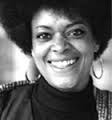
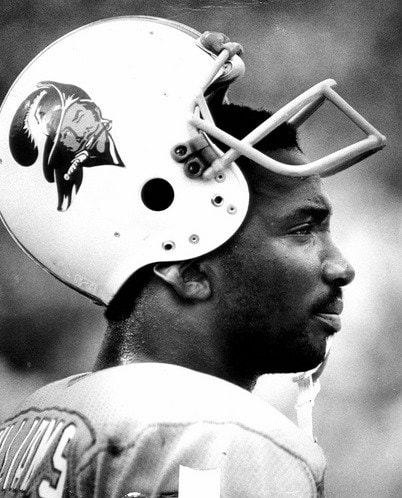
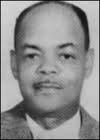
 RSS Feed
RSS Feed

